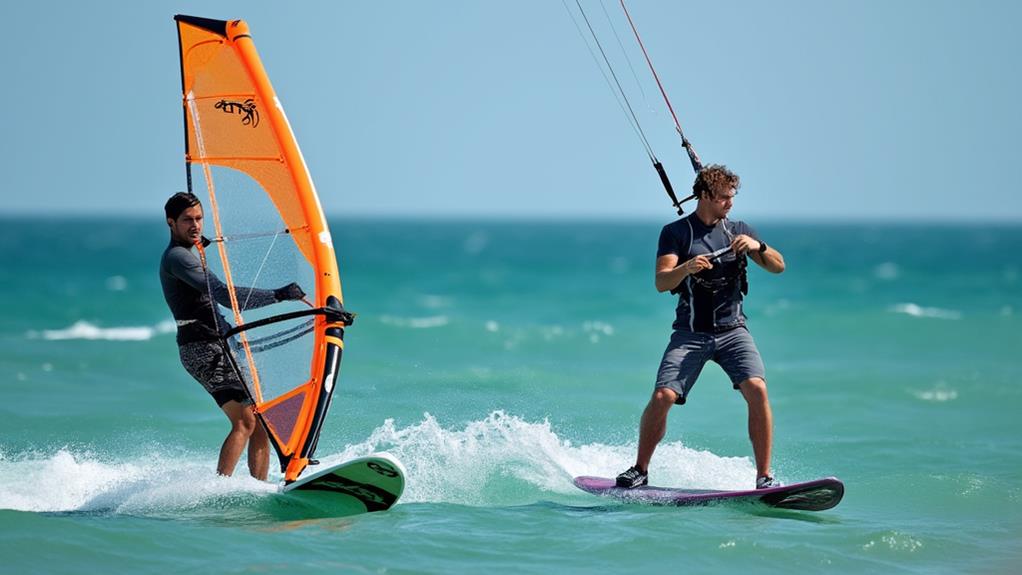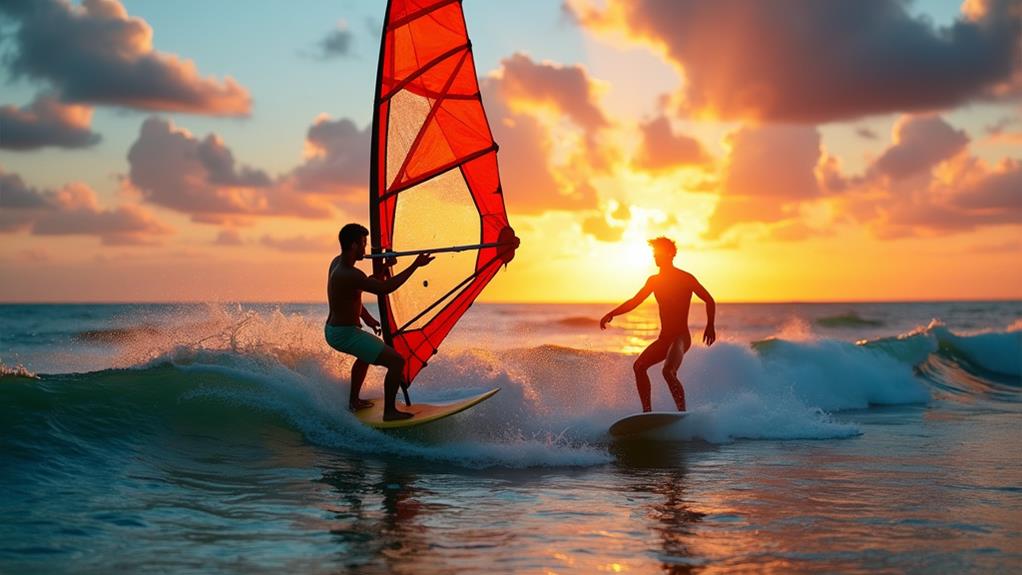Is Parasailing Safer Than Paragliding?
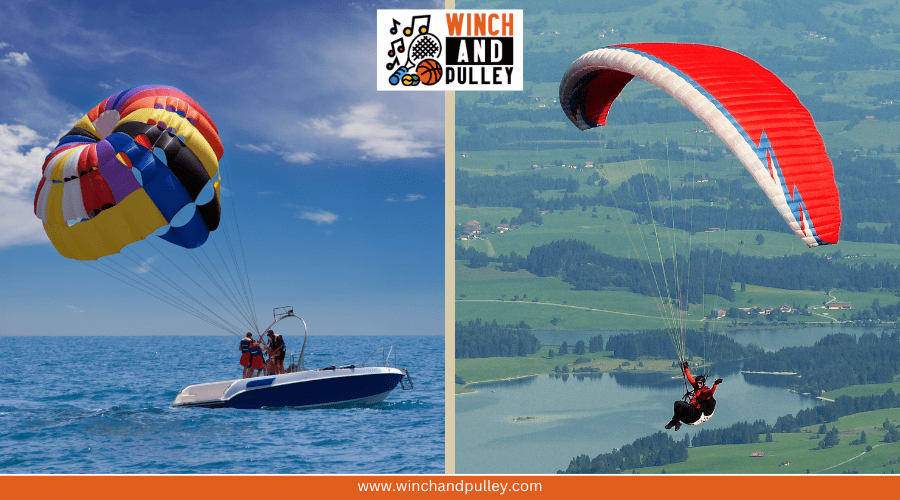
When considering the thrill of flying, you might wonder if parasailing is truly safer than paragliding. Parasailing typically involves being towed behind a boat, creating a controlled environment with fewer variables. In contrast, paragliding requires active flight management, facing unpredictable weather and terrain. With parasailing's structured protocols and minimal training requirements, it appears to be the safer option. However, does the lower risk of parasailing come at the cost of the experience's authenticity? Explore how equipment, safety gear, and flight control differences affect your adventure choice.
Understanding Parasailing and Paragliding
When considering aerial adventures, understanding the differences between parasailing and paragliding is essential. Parasailing offers a more relaxed experience, where participants are harnessed to a parachute-like canopy and towed behind a boat. This activity requires minimal training since the boat operator controls most aspects of the ride. Typically, parasailing lasts around 10-15 minutes, providing a short yet thrilling airborne excursion.
In contrast, paragliding demands active participation and significant training. Participants launch from elevated terrain and control their glider throughout the flight. Proper training is crucial for safety, as pilots must navigate different weather conditions and handle the glider effectively. Paragliding flights can last several hours, depending on the pilot's skill and the day's weather conditions.
Safety statistics favor parasailing over paragliding, with fewer fatalities reported. According to the Parasail Safety Council, parasailing has fewer deaths compared to activities like skydiving, which shares some risk factors with paragliding. While both activities are thrilling, parasailing generally poses fewer risks, partly due to the controlled nature of being towed by a boat and the shorter duration of the flight.
Equipment and Safety Gear
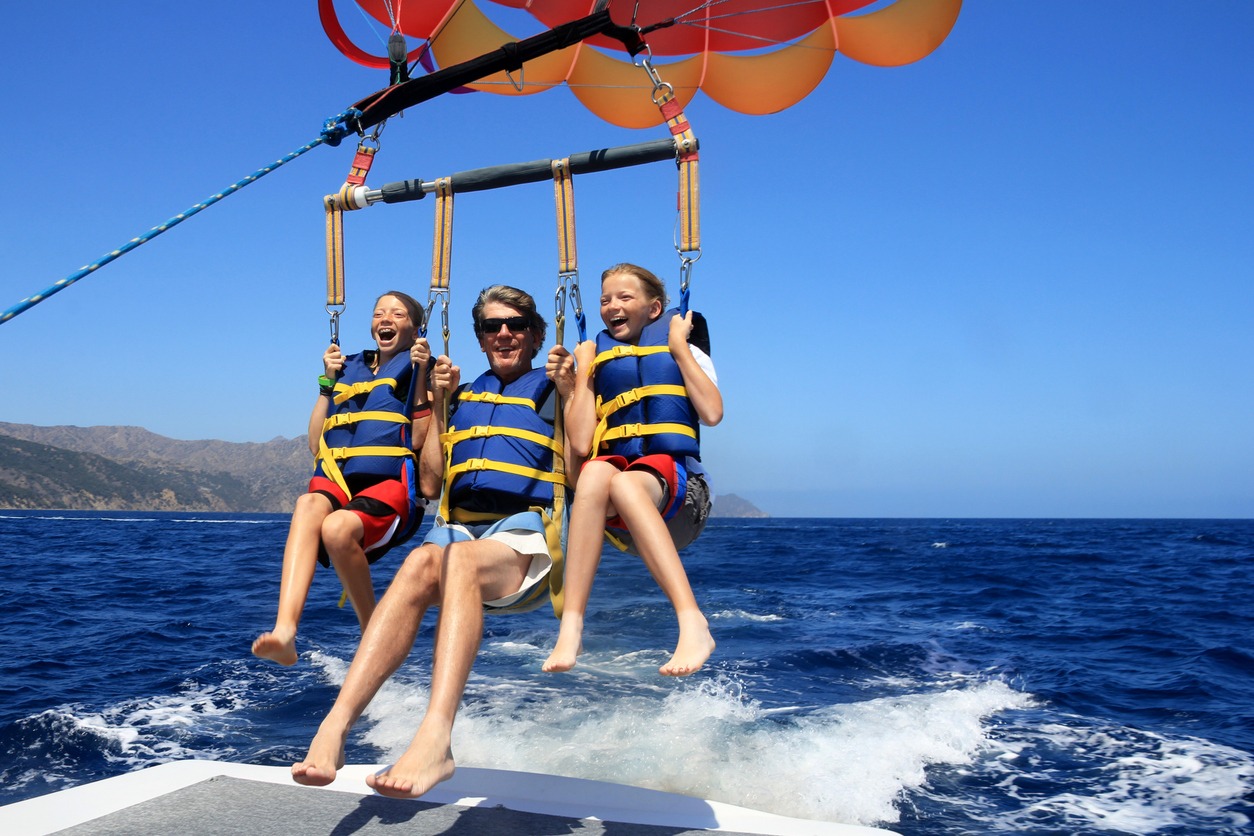
Choosing the right equipment and safety gear is crucial for both parasailing and paragliding, though the requirements differ significantly due to the nature of each activity.
In parasailing, the equipment includes a parasail canopy, harness, and tow rope, all designed to ensure stability and safety while airborne. The gear is primarily passive, relying on the boat to control the flight dynamics, which simplifies safety protocols.
Conversely, paragliding requires more active control, necessitating a more complex set of equipment and safety gear. Essential gear includes a glider, harness, helmet, and a reserve parachute. Paragliders are made from durable ripstop nylon, optimizing durability and gliding capabilities. The harnesses often feature inflating airbags to cushion unintended impacts.
Safety protocols in paragliding are more comprehensive due to the pilot's active role in steering and managing flight conditions. High-quality materials and emergency systems like reserve parachutes add layers of protection. In contrast, parasailing's simpler canopy design and reliance on tow ropes result in a more straightforward but less actively controlled safety setup.
Both sports prioritize high-quality materials and robust safety measures, but the level of control and type of equipment significantly influence their safety profiles.
Launch and Landing Procedures

Launching and landing are critical phases in both parasailing and paragliding, each presenting unique challenges and procedures. In paragliding, the pilot must run down a hill or elevated terrain to inflate the wing and generate lift. This process requires practice and skill to ensure a safe takeoff. Conversely, parasailing offers a more beginner-friendly launch from a boat deck or beach, where the speed of the boat lifts the canopy into the air.
For landing, paragliding necessitates active management of the descent. The pilot must control the wing and employ techniques such as flaring to ensure a safe landing on diverse terrains. Parasailing, however, provides a more passive experience. The boat operator manages the descent, ensuring a smooth return to the vessel without the need for active maneuvering by the participant.
Here's a quick comparison:
| Aspect | Paragliding | Parasailing |
|---|---|---|
| Launch | Run down hill to generate lift | Boat speed lifts canopy |
| Controlled Descent | Pilot actively manages descent | Boat operator controls the descent |
| Environmental Factors | Weather conditions affect launch and landing | Water conditions and boat operator control |
The Parasail Safety Council underscores the importance of the boat operator's skill in ensuring a safe and smooth parasailing experience.
Flight Control and Experience
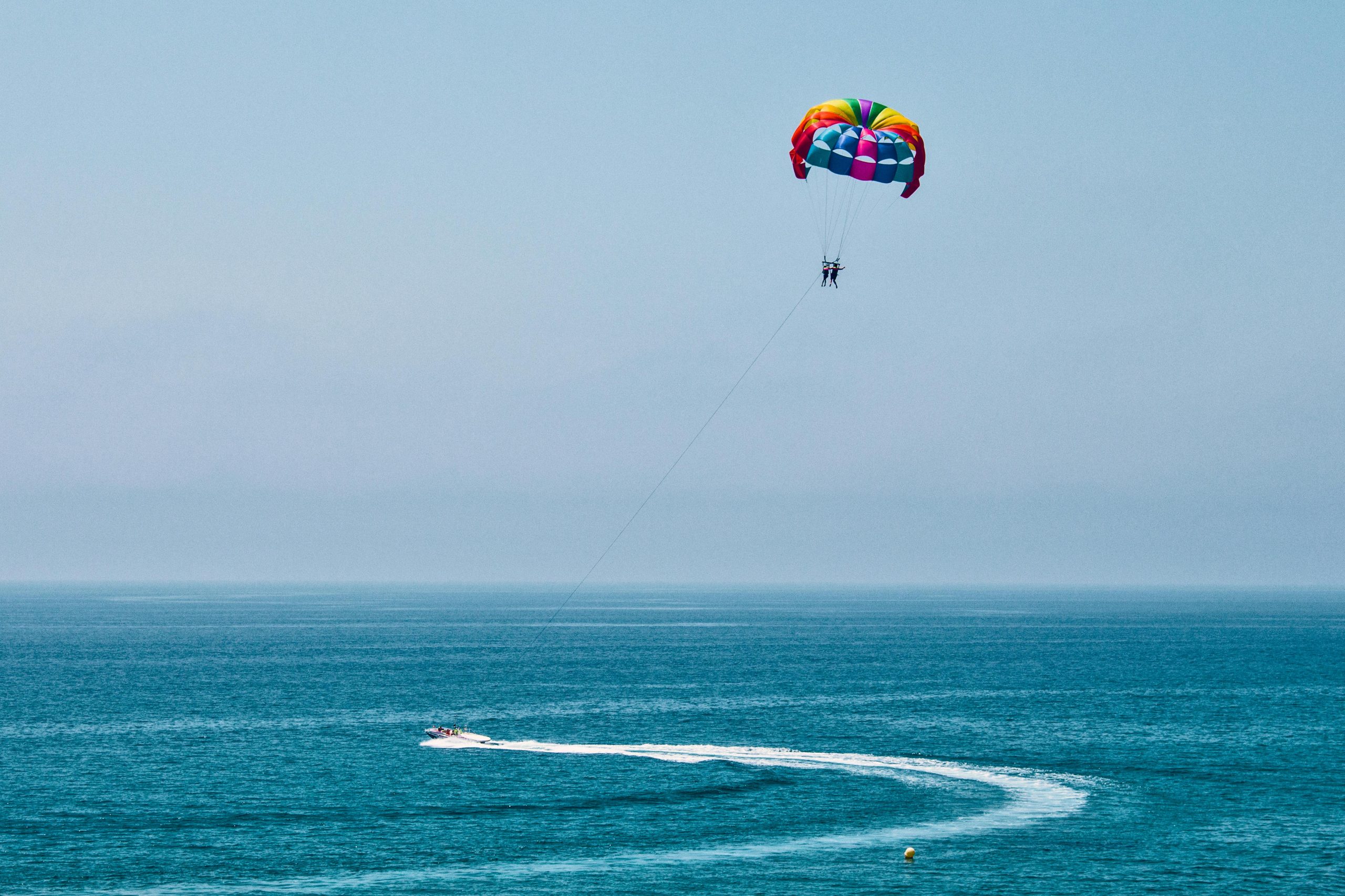
The mastery of flight control and overall experience vary significantly between paragliding and parasailing, each offering unique thrills and levels of responsibility. In paragliding, you are the pilot, actively controlling your flight by shifting your weight and manipulating the wing. This hands-on approach necessitates skill and training to navigate and land safely. The sophisticated design of paragliders allows for dynamic flight control, enabling you to interact with wind currents and perform intricate maneuvers.
Conversely, parasailing provides a more relaxed experience. Your flight is primarily controlled by the boat operator, making it ideal for those who prefer a passive adventure. You don't need extensive training to enjoy parasailing; you can simply relax and take in the views while the boat does the work. The parasail canopy is designed for stability and ease of use, ensuring a smooth ride.
Both activities come with safety features. Paragliding often includes a reserve parachute for emergencies, while parasailing relies on the tow rope and boat operation to ensure a stable flight. Ultimately, your choice between paragliding and parasailing depends on how much control and involvement you want in your airborne experience.
Safety Statistics and Data

Understanding the differences in flight control and experience between paragliding and parasailing provides a foundation for examining their respective safety statistics and data. When reviewing these numbers, it becomes evident that parasailing generally presents a safer profile. According to the Parasail Safety Council, parasailing has a notably lower fatality rate compared to paragliding. A study conducted in Turkey between 2004 and 2011 reported a fatality rate of 0.0074% for paragliding, which is significantly higher than that of parasailing.
Here is a comparison of fatality rates across various activities:
| Activity | Fatality Rate | Injury Rate |
|---|---|---|
| Paragliding | 0.0074% | 0.044% |
| Parasailing | Lower than 0.0074% | Lower than 0.044% |
| Skydiving | 0.0011% | Not Provided |
These figures indicate that paragliding poses a higher risk of fatalities and injuries compared to parasailing. Paragliding's injury rate of approximately 0.044% also exceeds that of parasailing. The nature of risks involved in each activity differs; paragliding risks often arise from freefall and parachute deployment, while parasailing incidents are more commonly related to equipment failure or towing issues. This comparison highlights the relative safety of parasailing.
Common Injuries and Risks
When comparing the injuries and risks associated with parasailing and paragliding, each activity presents unique hazards. In parasailing, injuries such as soft tissue trauma and sprains are more common, often resulting from equipment failure or tow line issues that can abruptly alter your flight dynamics. Conversely, paragliding tends to result in more severe injuries, including lumbar and tibia fractures, due to the nature of its controlled flight over varied terrains.
A study conducted in Turkey between 2004 and 2011 reported 82 injuries from 64 paragliding accidents, indicating a higher frequency of incidents compared to parasailing. The risk of mid-air collisions in paragliding also contributes to its danger, making these injuries more serious. The fatality rate for paragliding stands at approximately 0.0074%, which is higher than that for parasailing, reflecting the inherent risks associated with each sport.
Both activities require strict adherence to safety protocols to mitigate risks. However, because paragliding demands active control and often involves unpredictable environments, the likelihood of encountering common injuries is higher than in parasailing. Always be cautious and aware of the specific risks each sport presents.
Training and Safety Protocols
Training and safety protocols differ significantly between parasailing and paragliding, reflecting the distinct demands of each sport. Parasailing generally requires minimal training. A brief orientation on safety protocols and the tow system is usually sufficient, with an emphasis on equipment checks and securing everything before lift-off.
In contrast, paragliding necessitates comprehensive training to ensure skill and safety. This includes learning launch techniques, flight control, and emergency procedures, which are essential for managing the more complex operational demands of paragliding.
Safety gear is crucial for both activities but varies in requirements. Parasailing typically involves a harness and life jacket, while paragliding requires a reserve parachute due to its higher risk factor.
Regulations are critical in parasailing, with operators required to maintain equipment and adhere to stringent safety guidelines, contributing to its lower injury and fatality rates. Paragliding training standards can vary, which may impact overall safety. Statistically, parasailing has a lower injury and fatality rate, owing to its simpler equipment and less demanding operational requirements.


